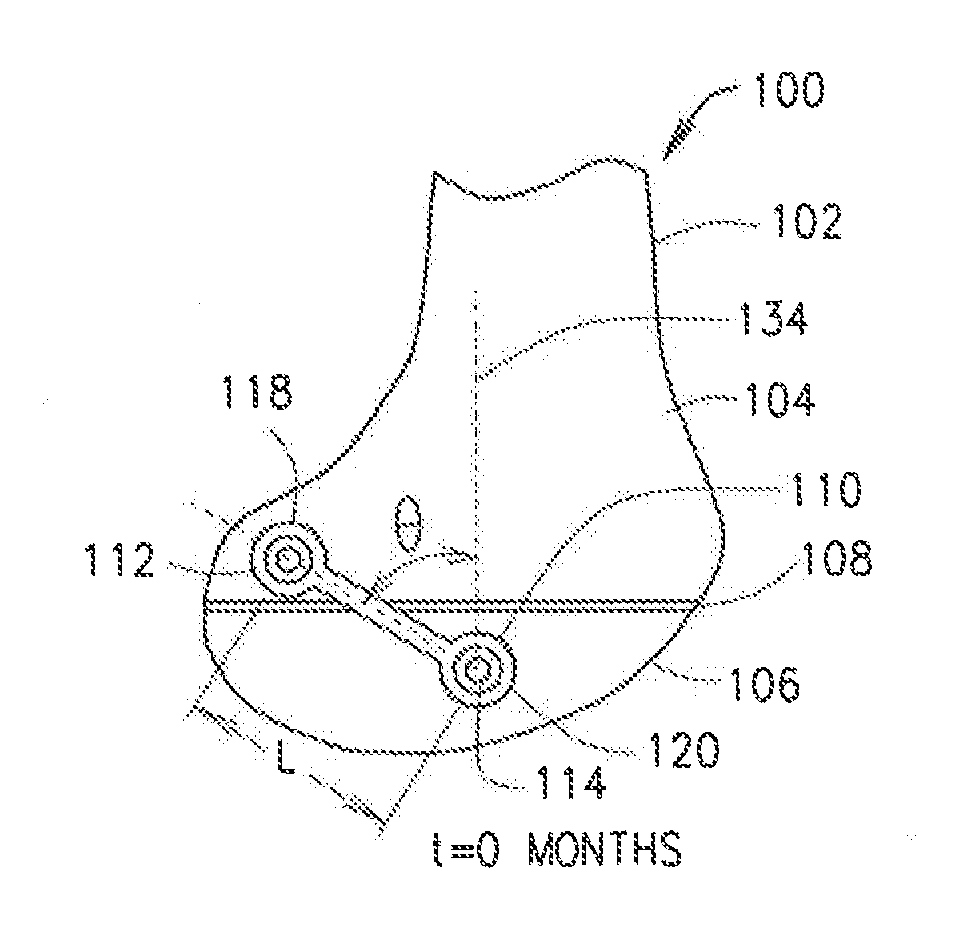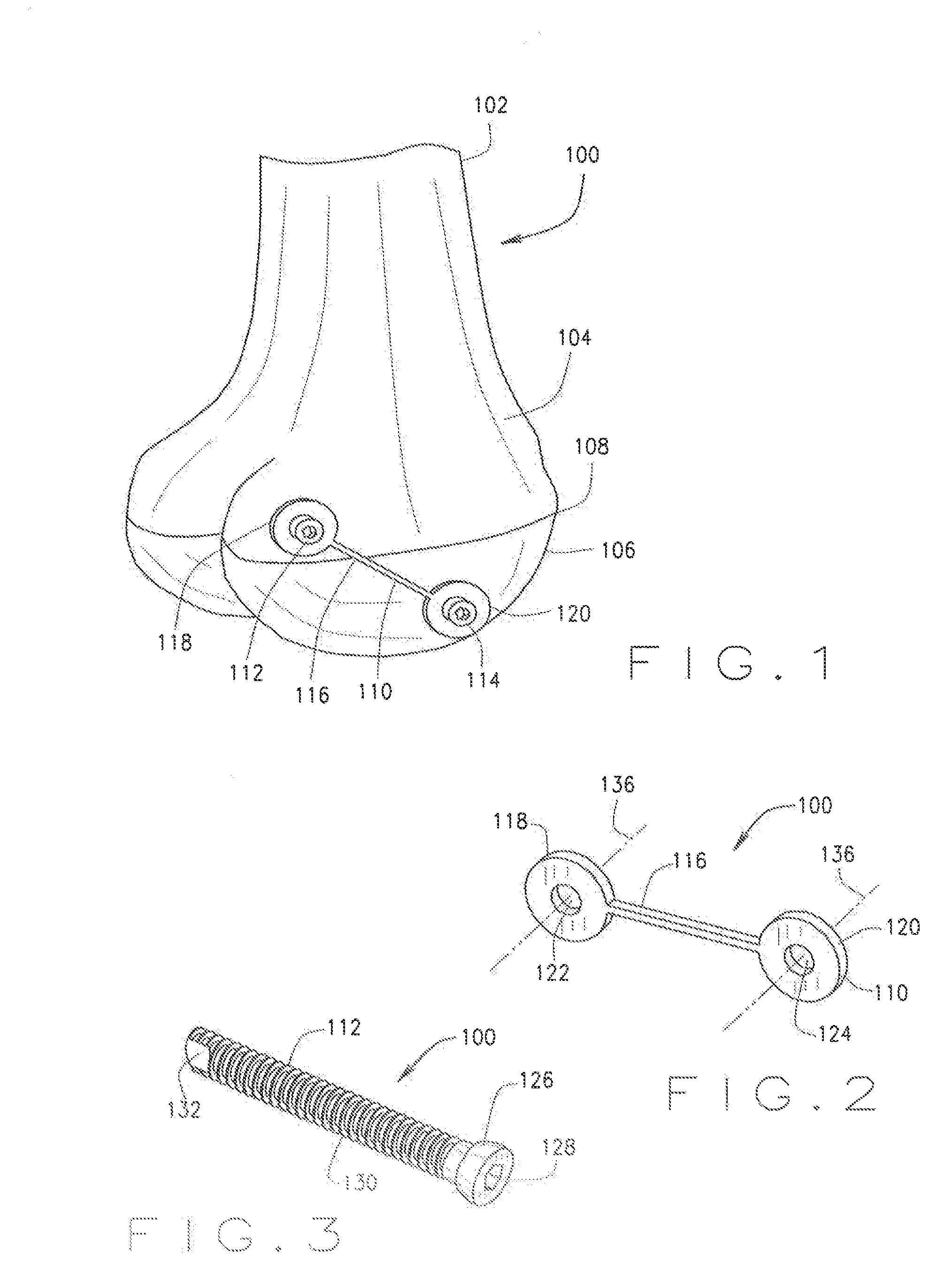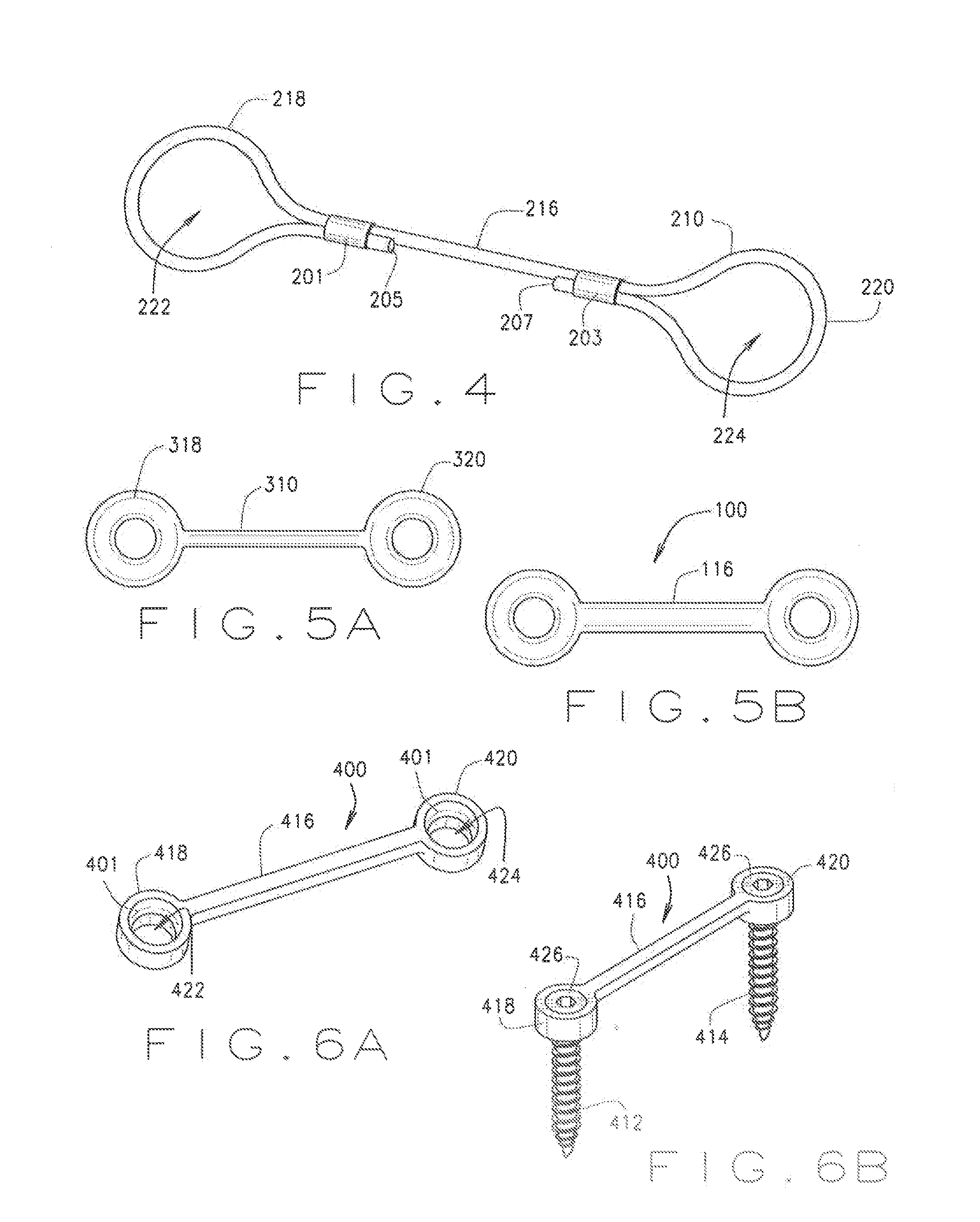Systems and methods for correcting a rotational bone deformity
a rotational bone and bone deformity technology, applied in the field of orthopedic devices, can solve the problems of affecting the function of the bone,
- Summary
- Abstract
- Description
- Claims
- Application Information
AI Technical Summary
Benefits of technology
Problems solved by technology
Method used
Image
Examples
Embodiment Construction
[0031]Referring to the drawings, embodiments of an orthopedic apparatus are illustrated and generally indicated as 100 in FIGS. 1-3 and 7-8. In general, the orthopedic apparatus 100 can be used to correct, repair, or otherwise improve bone maladies (e.g., bone rotational deformities) in an animal, which includes, but is not limited to humans. For example, some embodiments of the orthopedic apparatus 100 can be used to correct rotational bone deformities that are associated with any bone that has a growth plate, such as a femur, a tibia, a humerus, etc. Moreover, the following disclosure largely details the use of embodiments of the orthopedic apparatus 100 in the context of the correction of a femoral rotational bone deformity. However, this disclosure is not intended to limit the use of the orthopedic apparatus 100 to the context of correcting femur-based deformities. Rather, as mentioned above, the orthopedic apparatus 100 can be used to correct the bone maladies associated with a...
PUM
 Login to View More
Login to View More Abstract
Description
Claims
Application Information
 Login to View More
Login to View More - R&D
- Intellectual Property
- Life Sciences
- Materials
- Tech Scout
- Unparalleled Data Quality
- Higher Quality Content
- 60% Fewer Hallucinations
Browse by: Latest US Patents, China's latest patents, Technical Efficacy Thesaurus, Application Domain, Technology Topic, Popular Technical Reports.
© 2025 PatSnap. All rights reserved.Legal|Privacy policy|Modern Slavery Act Transparency Statement|Sitemap|About US| Contact US: help@patsnap.com



